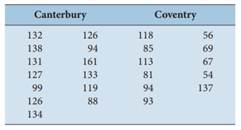dolution
dolution.
In European countries and America, turning up on time for a meeting is given. Whereas in Saudi Arabia, it’s common to turned up late to a meeting
– In America, when playing golf, if you hit a hole in one, you’re expected to buy everyone a drink. But In Japan, it’s traditional to buy your playing partner expensive gifts.
– The English believe that it’s a slur on your host’s food if you don’t clear your plate, whereas the Chinese feel you’re questioning their generosity if you do that.
Questions:
a) Cross-cultural literacy – an understanding of how cultural differences across and within nations can affect the way in which business is practiced. Why is cross-cultural literacy important for business success? Give an example!
b) Elaborate about n-culture and what is the role of n-culture in international business? What factors contributed to a culture change?
"Looking for a Similar Assignment? Get Expert Help at an Amazing Discount!"



